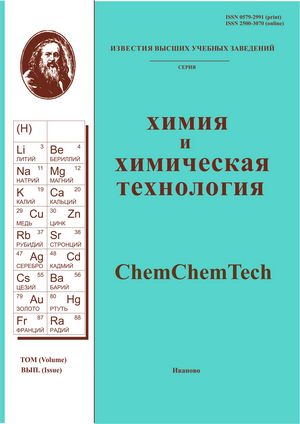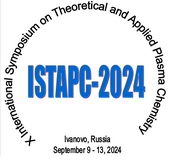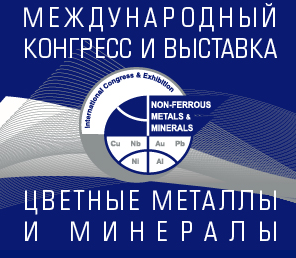СИНТЕЗ ПОЛИАНИЛИНА, ПОЛИФЕНИЛЕНДИАМИНА, ПОЛИТОЛУИДИНА И ТЕКСТИЛЬНЫХ КОМПОЗИЦИОННЫХ МАТЕРИАЛОВ НА ИХ ОСНОВЕ
Аннотация
Двухстадийным процессом, основанным на жидкофазной гетерогенно-каталитической гидрогенизации нитробензола, п-нитротолуола и п-нитроанилина в водном растворе 2-пропанола c получением соответствующих аминов и последующей окислительной полимеризации полученных аминов в водно-спиртовом растворе соляной кислоты в присутствии окисляющих агентов – персульфата аммония и бихромата калия были получены полианилин, политолуидин, полифенилендиамин. Структура полученных полимеров подтверждена с помощью метода ИК-спектроскопии. Исследование термических свойств полученных полимеров проводили методами термогравиметрического анализа и дифференциально-сканирующей калориметрии. Показано, что полиамины термостабильны в интервале температур 250-350 °С. Для изучения электроповодности полученных полиаминов был использован метод кондуктометрии. Показано, что при использовании бихромата калия полученный продукт обладал меньшей проводимостью по сравнению с полимером, полученным при использовании персульфата аммония. В дальнейшем, синтезированные полимеры были использованы для получения текстильных композиционных материалов на основе текстильных волокон. На первой стадии получения данных материалов хлопковое и льняное волокна были покрыты пленкой полиамида-6, как легирующей добавки, повышающей механическую прочность и фотоустойчивость. Для нанесения пленки были использованы растворы полиамида-6 в концентрированной муравьиной кислоте двух концентраций – 2,4 ммоль/л, 0,5 ммоль/л. На второй стадии на полиамидную пленку был нанесен слой обработанных полиаминов. Поверхность полученных композиционных материалов была исследована методом электронной микроскопии. Анализ волокон хлопка и льна, обработанных раствором полиамида-6 различной концентрацией показал, что при увеличении концентрации раствора полиамида возрастает упорядоченность волокон и целостность всего пучка.
Литература
Dastjerdi R., Montazer M.A. Review on the Application of Inorganic Nano-Structured Materials in the Modification of Textiles: Focus on Anti-Microbial Properties. Coll.Ssurf. B, Biointerfaces. 2010. V. 79. P. 5-18. DOI: 10.1016/j.colsurfb.2010.03.029.
Carpi F., de Rossi D. Electroactive Polymer-Based Devices for e-Textiles in Biomedicine. IEEE transact. on inform. Technol. in biomed.: a publ. of the IEEE Eng. in Med. and Biol. Soc. 2005. V. 9. P. 295-318. DOI: 10.1109/TITB.2005.854514.
Davide C., Secco E., Tognetti A., Loriga G., Dudnik G., Risatti M., Whyte R., Bonfiglio A., Magenes G. Smart Garments for Emergency Operators: The ProeTEX Project. IEEE Transact. Informat. Technol. Biomed. 2010. 14. P. 694-701. DOI: 10.1109/TITB.2010.2045003.
Shim B.S., Chen W., Doty C., Xu C., Kotov N.A. Smart Electronic Yarns and Wearable Fabrics for Human Bio-monitoring made by Carbon Nanotube Coating with Polyelectrolytes. Nano Lett. 2008. V. 8. P. 4151-4157. DOI: 10.1021/nl801495p.
Slepchuk I., Semeshko O.Ya., Asaulyuk T.S., Saribyekova Yu.G. Investigation of physicochemical properties of styreneacrylic and urethane polymers used in finishing of textile materials. ChemChemTech [Izv. Vyssh. Uchebn. Zaved. Khim. Khim. Tekhnol.]. 2020. V. 63. N 3. P. 88-93. DOI: 10.6060/ivkkt.20206303.6091.
Sahito I., Sun K., Arbab A., Qadir M.B., Jeong S. Graphene coated cotton fabric as textile structured counter electrode for DSSC. Electrochim. Acta. 2015. V. 173. P. 164-171. DOI: 10.1016/j.electacta.2015.05.035.
Mengal N., Sahito I., Arbab A., Sun K., Qadir M.B., Memon A., Jeong S. Fabrication of a Flexible and Con-ductive Lyocell Fabric Decorated with Graphene Nanosheets As a Stable Electrode Material. Carbohyd. Polym. 2016. V. 152. P. 19-25. DOI: 10.1016/j.carbpol.2016.06.099.
Yun Y.J., Hong W., Kim W.-J., Jun Y., Kim B.H. A Novel Method for Applying Reduced Graphene Oxide Directly to Electronic Textiles from Yarns to Fabrics. Adv. Mater. 2013. V. 25. P. 5701-5705. DOI: 10.1002/adma.201303225.
Javed K., Galib C.M.A., Yang F., Chen C.-M., Wang C. A new approach to fabricate graphene electro-conductive networks on natural fibers by ultraviolet curing method. Synth. Metals. 2014. V. 193. P. 41–47. DOI: 10.1016/j.synthmet.2014.03.028.
Cherenack K., Zysset C., Kinkeldei T., Münzenrieder N., Tröster G. Woven Electronic Fibers with Sensing and Display Functions for Smart Textiles. Adv. Mater. 2010. V. 22. P. 5178-5182. DOI: 10.1002/adma.201002159.
Alamer F.A. A simple method for fabricating highly electrically conductive cotton fabric without metals or nanoparticles, using PEDOT:PSS. J. Alloys Comp. 2017. V. 702. P. 266-273. DOI: 10.1016/j.jallcom.2017.01.001.
Lee S., Park C.H. Electric heated cotton fabrics with du-rable conductivity and selfcleaning properties. RSC Adv. 2018. V. 8. P. 31008-31018. DOI: 10.1039/C8RA05530K.
Li X., Li,Y., Guan T., Xu F., Sun J. Durable, Highly Electrically Conductive Cotton Fabrics with Healable Super-amphiphobicity. ACS Appl. Mater.Interf. 2018. V. 10. P. 12042-12050. DOI: 10.1021/acsami.8b01279.
Yang M., Pan J., Xu A., Luo L., Cheng D., Cai G., Wang J., Tang B., Wang X. Conductive Cotton Fabrics for Motion Sensing and Heating Applications. Polymers (Basel). 2018. 10. V. 6. P. 568-580. DOI: 10.3390/polym10060568.
Alamer F.A. Structural and electrical properties of con-ductive cotton fabrics coated with the composite polyaniline/carbon black. Cellulose. 2018. V. 25. P. 2075-2082. DOI: 10.1007/s10570-018-1667-9.
Andriianova A.N., Biglova,Y.N., Mustafin A.G. Effect of structural factors on the physicochemical properties of functionalized polyanilines. RSC Adv. 2020. V. 10. P. 7468-7491. DOI: 10.1039/C9RA08644G.
Bakhshi A.K. Electrically conducting polymers: from fundamental to applied research. Bull. Mater. Sci. 1995. V. 18. P. 469-495. DOI: 10.1007/BF02744834.
Bhandari S., Visakh P.M., Pina C.D., Falletta E. Chapter 2 - Polyaniline: Structure and Properties Relationship. In: Polyaniline Blends, Composites, and Nanocomposites. Elsevier. 2018. P. 23-60. DOI: 10.1016/B978-0-12-809551-5.00002-3.
Bloor D., Monkman A.P., Stevens G.C., Cheung K.M., Pugh S. Structure-Property Relationships in Conductive Polymers. Molec. Cryst. Liq. Cryst. Incorp. Nonlin. Optics. 1990. V. 187. P. 231-239. DOI: 10.1080/00268949008036047.
Kiani M.S., Mitchell G.R. Structure property relationships in electrically conducting copolymers formed from pyrrole and N-methyl pyrrole. Synth. Metals. 1992. V. 46. P. 293-306. DOI: 10.1016/0379-6779(92)90355-M.
Kryszewski M., Jeszka J., Ulanski J., Tracz A. Structure and electrical properties of polymers with amorphous and crystalline dopants. Pure Appl. Chem. 1984. V. 56. P. 355-368. DOI: 10.1351/pac198456030355.
Unsworth J., Conn C., Zheshi,J., Kaynak A., Ediriweera R., Innis P., Booth N. Conducting Polymers: Properties and Applications. J. Intelligent Mater. Syst. Struct. 1994. V. 5. P. 595-604. DOI: 10.1177/1045389X9400500501.
Andre R.S., Pavinatto A., Mercante L.A., Paris E.C., Mattoso L.H.C., Correa D.S. Improving the electrochemical properties of polyamide 6/polyaniline electrospun nanofibers by surface modification with ZnO nanoparticles. RSC Adv. 2015. V. 5. P. 73875-73881. DOI: 10.1039/C5RA15588F.
Latypova A.R., Lefedova O.V., Filippov D.V., Doluda V.Y. Features of hydrogenization of 2-chloro-4-nitroaniline on supported palladium and platinum catalysts in 2-propanol and ethyl acetate. ChemChemTech. [Izv. Vyssh. Uchebn. Zaved. Khim. Khim. Tekhnol.]. 2020. V. 63. N 1. P. 86-91. DOI: 10.6060/ivkkt.20206301.5983.
Ansari R., Alikhani A.H. Application of polyaniline/nylon composites coating for corrosion protection of steel. J. Coat. Technol. Res. 2009. V. 6. P. 221-227. DOI: 10.1007/s11998-008-9140-6.
Engin Sagirli F., Usta I. Development and characterisation of polyaniline/polyamide (PANI/PA) fabrics for elec-tromagnetic shielding. J. Textile Institute. 2014. V. 106. P. 1-8. DOI: 10.1080/00405000.2014.950085.
Araujo J., Adamo,C., Robertis E., Kuznetsov A., Archanjo B., Achete C., De Paoli M.A. Polyaniline coat-ed curauá fibres in polyamide-6 composites: The effect of fibre surface modification on the crystallographic proper-ties. Conf.: HPSM/OPTI. 2014. V. 137. P. 589-599. DOI: 10.2495/HPSM140541.
Lapkin D.A., Malakhov S.N., Demin V.A., Chvalun S.N., Feigin L.A. Hybrid polyaniline/polyamide-6 fibers and nonwoven materials for assembling organic memristive elements. Synth. Metals. 2019. V. 254. P. 63-67. DOI: 10.1016/j.synthmet.2019.05.016.
Mezdour D., Tabellout M., Bouanga C., Sahli S. Electrical properties of polyamide/polyaniline composite films. J. Phys.: Conf. Ser. 2009. V. 183. P. 012017-012023. DOI: 10.1088/1742-6596/183/1/012017.
Mezdour D., Tabellout M., Bardeau J.F., Sahli S. Dielectric and electrical properties of PANI composite films. In: Proc. of 2014 North African Workshop on Dielectic Materials for Photovoltaic Systems (NAWDMPV). 2014. P. 1-4. DOI: 10.1109/NAWDMPV.2014.6997612.
Shaker Mabrouk E., Moataz Mohmed S., Mona Mahmound Abd,E.-L. Blend of Nylon 6 and Polyaniline Doped with Sulfanilic Acid and its Schottky Diode. High Perform. Polymers. 2009. V. 22. P. 377-391. DOI: 10.1177/0954008309103796.
Soroudi A. Skrifvars M. Electroconductive polyblend fibers of polyamide-6/polypropylene/polyaniline: Electri-cal, morphological, and mechanical characteristics. Polymer Eng Sci. 2012, V. 52. P. 1606-1612. DOI: 10.1002/pen.23074.
Kamran Z., Mostafa Y. An investigation into the structure and morphology of polyamide 6/polyaniline hybrid fibers. J. Polymer Eng. 2018. V. 38. P. 19-24. DOI: 10.1515/polyeng-2016-0170.
Zhang Q., Jin H., Wang X., Jing X. Morphology of conductive blend fibers of polyaniline and polyamide-11. Synth. Metals. 2001. V. 123. P. 481-485. DOI: 10.1016/S0379-6779(01)00354-X.
Walde P., Kashima K., Ćirić-Marjanović G. Synthesizing Polyaniline With Laccase/O2 as Catalyst. Frontiers Bi-oeng. Biotechnol. 2019. V. 7. P. 165-175. DOI: 10.3389/fbioe.2019.00165.
Shan J., Han L., Bai F., Cao S. Enzymatic polymerization of aniline and phenol derivatives catalyzed by horseradish peroxidase in dioxane(II). Polymers Adv. Technol. 2003. V. 14. P. 330-336. DOI: 10.1002/pat.316.
Guo Z., Rüegger H., Kissner R., Ishikawa T., Willeke M., Walde P. Vesicles as Soft Templates for the Enzymat-ic Polymerization of Aniline. Langmuir. 2009. V. 25. P. 11390-11405. DOI: 10.1021/la901510m.
Flores-Loyola E., Cruz-Silva R., Romero-García J., Angulo-Sánchez J.L., Castillon F.F., Farías M.H. Enzy-matic polymerization of aniline in the presence of different inorganic substrates. Mater. Chem. Phys. 2007. V. 105. P. 136-141. DOI: 10.1016/j.matchemphys.2007.04.041.
Bruno F.F., Marx K.A., Tripathy S.K., Akkara J.A., Samuelson L.A., Kaplan D.L. Enzyme Catalyzed Polymerization of Phenol and Aniline Derivatives on a Langmuir Trough to Form Ordered 2-D Polymer Films. J. Intelligent Mate. Syst. Struct. 1994. V. 5. P. 631-634. DOI: 10.1177/1045389X9400500506.
Ćirić-Marjanović G., Milojević-Rakić M., Janošević-Ležaić A., Luginbühl S., Walde P. Enzymatic oligomerization and polymerization of arylamines: state of the art and perspectives. Chem. Papers. 2017. V. 71. P. 199-242. DOI: 10.1007/s11696-016-0094-3.
Nascimento G.V., Sestrem R.H., Temperini M.L.A. Structural characterization of poly-para-phenylenediamine–montmorillonite clay nanocomposites. Synth. Metals. 2010. V. 160. P. 2397-2403. DOI: 10.1016/j.synthmet.2010.09.016.
Manivel P., Venkatachari G. The Inhibitive Effect of Poly(p-toluidine) on Corrosion of Iron in 1M HCl Solu-tions. J. Appl. Polymer Sci. 2007. V. 104. P. 2595-2601. DOI: 10.1002/app.25838.
Wang Sh., Tan Zh., Li Y., Suna L., Zhang T. Synthesis, characterization and thermal analysis of polyaniline/ZrO2 composites. Thermochim. Acta. 2006. V. 441. P. 191–194. DOI: 10.1016/j.tca.2005.05.020.
Guo Y., Zheng M., Chen J. Chemical Synthesis, Characterization and Thermal Analysis of Polyaniline/Copper Composite Powder. J. Compos. Mater. 2008. V. 42. P. 1431-1438. DOI: 10.1177/0021998308091998.
Yang Ch., Chen Ch. Synthesis, characterisation and properties of polyanilines containing transition metal ions. Synth. Metals. 2005. V. 153. Is. 1–3. P. 133-136. DOI: 10.1016/j.synthmet.2005.07.136.
Kumar А., Kumar А., Mudila Н., Аwasthi К., Kumar V. Synthesis and thermal analysis of polyaniline (PANI). 2nd International Conference on Recent Advances in Fundamental and Applied Sciences RAFA. 5-6 November 2019. Punjab. India. J. Phys.: Conf. Ser. 2019. V. 1531. DOI: 10.1088/1742-6596/1531/1/012108.



















